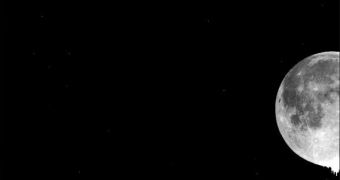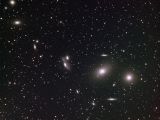Case Western Reserve University researchers using new charge coupled device instrumentation are now able to view deeper and wider in the night sky than previously thought possible. CCDs are highly sensitive light sensors similar to those used by today's digital cameras. The new device was designed and installed on the Burrel Schmidt telescope at Kitt Peak National Observatory by astronomer Paul Harding from the Case Western Reserve and will be used to determine the age of stars in the vicinity of the Virgo galaxy cluster.
Such stars, called 'intracluster light', are formed by galaxies engaged in gravitational interactions with one another inside the galaxy cluster. Gravity pulls material and stars from their parent galaxies and ejects them at high speeds into intergalactic space. The phenomenon was first discovered in the Virgo cluster about three years ago by astronomer Chris Mihos and his colleagues from the Case Western Reserve and could explain how galaxy clusters are born and how they evolve in time.
However, in order to study such stars the camera or the telescope must first be able to see their basic colors. "Typically younger stars are bluer, so if we can measure the color of the intracluster light, we can learn about its age", said Harding.
If the team finds relatively young stars, it means that the Virgo cluster formed in the last few billion years or so. Additionally, most stars present a very faint blue color, which would explain why the upgrade of the Burrel Schmidt telescope was absolutely required.
The telescope can now observe an area of space of 1.5 degrees, two times larger than the one explored having the capabilities of the old camera. To get an idea on how big that area is, you should know that the new camera can fit nine full moons in its field of view. "By imaging twice as much sky, we can collect twice as much light at once and that lets us detect this faint starlight even in the blue where it is extremely faint", Mihos said.
Other upgrades to the telescope increased the film size from 35 millimeters to a larger format film. The CCD sensor, made out of a silicon wafer measuring nearly 8 centimeters across was made by the Imaging Laboratory at the University of Arizona and cost about 100,000 US dollars to fabricate.

 14 DAY TRIAL //
14 DAY TRIAL // 
